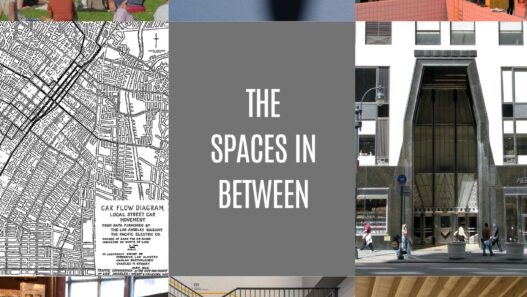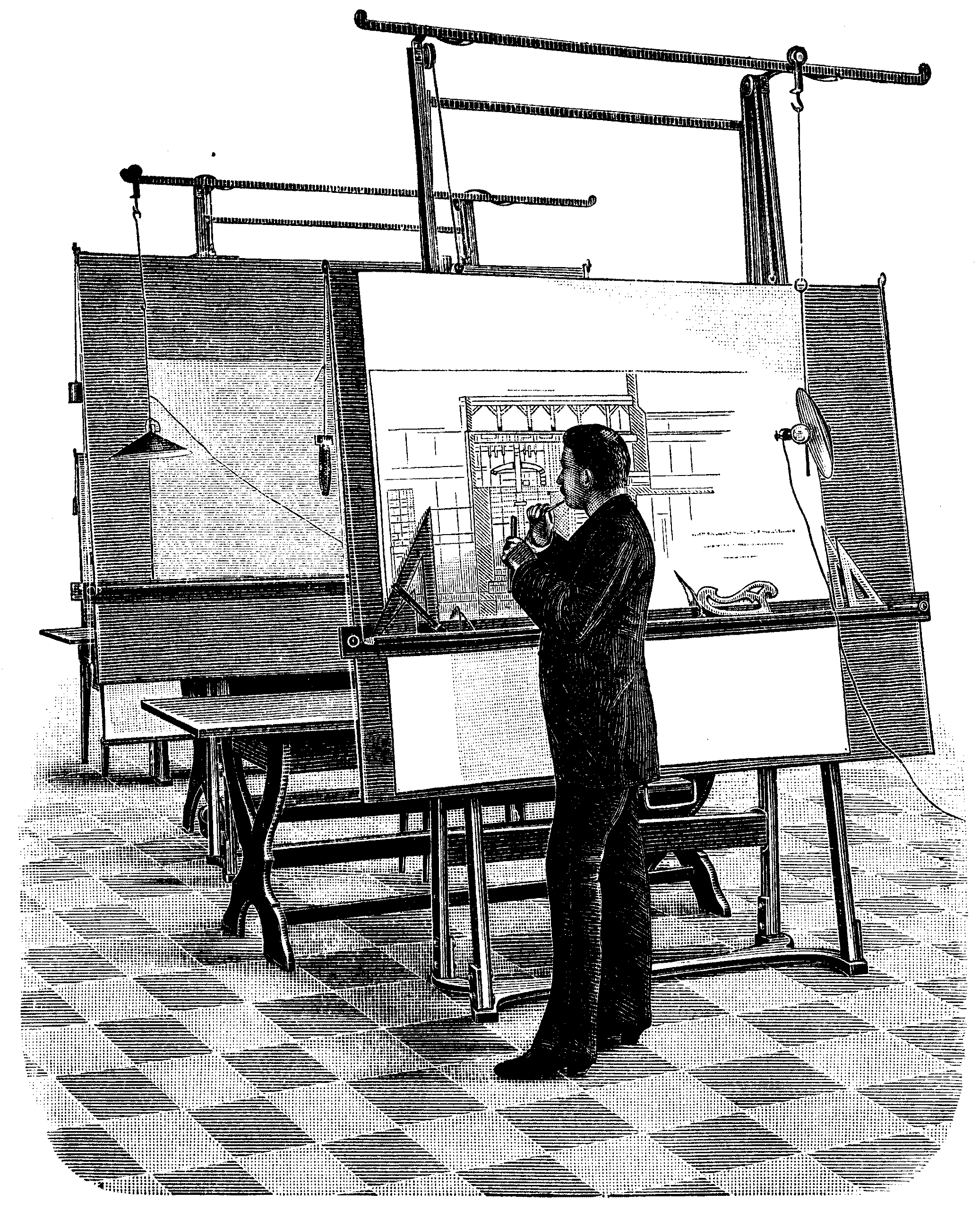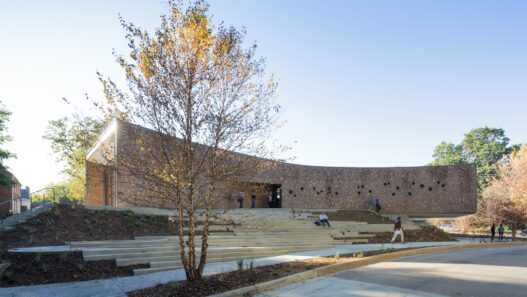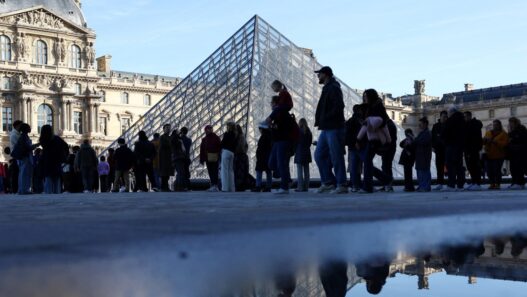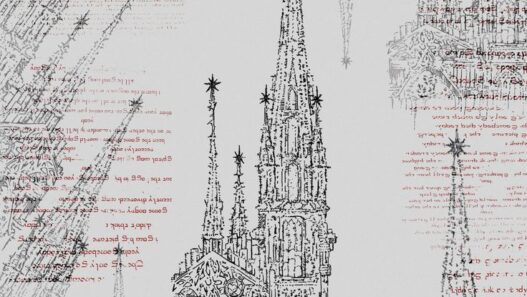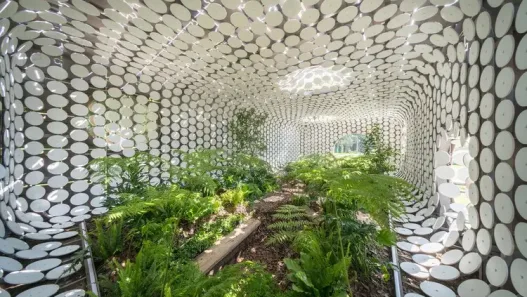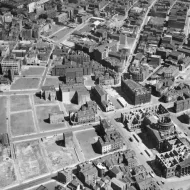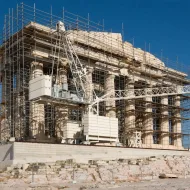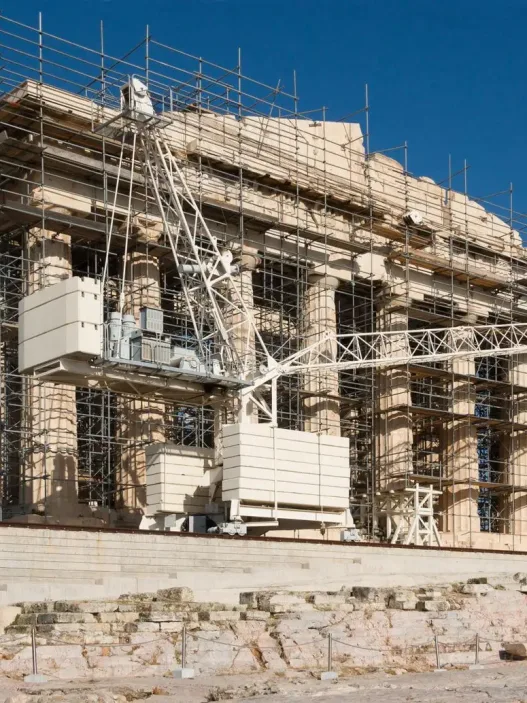Architecture is often seen as a visual art, a symphony of shapes, materials and spaces. However, there is a deeper layer of architecture that extends beyond the eye. This is where sensory architecture comes in, interweaving music and art to create environments that resonate with our senses and experiences. Sensory architecture invites us to fully engage with our environment by making us aware of how sound, color, texture and light can affect our perception and interaction in a space.
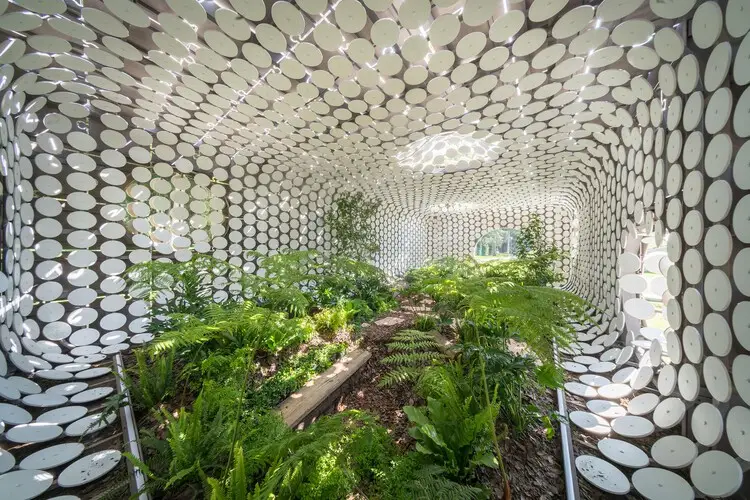
Definition of Sensory Architecture
Sensory architecture means designing spaces that provide a multi-sensory experience by activating not only our sense of sight but also our senses of hearing, touch and even smell. This approach recognizes that our perception of space is influenced by various stimuli and creates a holistic experience. In sensory architecture, elements such as acoustics, lighting and materials are carefully considered to evoke specific emotions or responses. For example, a concert hall is designed not only for visual aesthetics but also to optimize sound, creating an enveloping aural experience that complements the performance. In this way, sensory architecture goes beyond traditional design, focusing on how spaces can resonate with human emotions and senses.
The Importance of Multisensory Experiences
Creating multi-sensory experiences in architecture is crucial for creating deeper connections between individuals and their environment. When we step into a space that engages multiple senses, we become more aware and present. For example, the subtle play of light from stained glass in a cathedral not only beautifies the space, but also changes the atmosphere, inviting reflection and contemplation. Similarly, the sound of water in a public park can transform an ordinary place into an oasis of calm, encouraging relaxation and social interaction. These sensory elements contribute to our overall well-being, enhancing our experiences in both public and private spaces. By prioritizing multisensory experiences, architects can design environments that are not only functional but also enriching and transformative.
Historical Context and Evolution
The idea of incorporating sensory experiences into architecture is not new. Throughout history, various cultures have recognized the importance of engaging the senses. Ancient Roman architecture, for example, used acoustics in amphitheaters to amplify sound, while the intricate mosaics and frescoes of Renaissance buildings engaged the eye and invited exploration. In the modern era, movements such as Expressionism and Brutalism began to challenge traditional aesthetics, emphasizing the narrative and emotional aspects of design. Architects such as Frank Lloyd Wright and Zaha Hadid embraced the idea of creating spaces that are not only visually stunning but also emotionally resonant. This evolution reflects a growing understanding of how our environment can profoundly influence our experiences and brings a more nuanced approach to architectural design.
Key Theorists and Practitioners
Many theorists and practitioners have significantly influenced the integration of music and art into architectural design. Juhani Pallasmaa is one of them, emphasizing the importance of sensory experiences in his writings. Pallasmaa argues that architecture should stimulate all the senses, not just sight, in order to foster a deeper connection with the environment. Another influential voice is Peter Zumthor, whose work reflects a deep sensitivity to materials and atmosphere, creating spaces that resonate on an emotional level. In the field of music, architects such as Arata Isozaki have explored the relationship between sound and space, designing buildings that enhance musical experiences. These thinkers and creators emphasize the importance of a multi-sensory approach to architecture and remind us that our environment should speak to us in more than one way.
Overview of Musical and Artistic Influences
Music and art are powerful sources of inspiration in architectural design. The rhythm and flow of music can inform the spatial organization of a building, guiding the movement and interactions of its occupants. For example, the design of concert halls and theaters is heavily influenced by the acoustics needed to enhance musical performances and incorporates elements that reflect the nuances of sound. Similarly, artistic influences such as color theory and spatial composition play an important role in how spaces are perceived. The vibrant murals of a community center can convey cultural narratives, while the subtle use of color in a healthcare facility can promote calm and healing. By drawing on the rich traditions of music and art, architects can create spaces that not only function effectively, but also resonate emotionally and enrich our experiences in profound ways.
Ultimately, the exploration of sensory architecture reveals a fascinating interplay between music, art and design. By understanding how these elements influence our experiences, architects can create environments that are not only visually appealing but also deeply engaging, inviting us to connect with our environment on a multi-sensory level.
Architecture is not just about building buildings; it is about bringing together a variety of sensory experiences. Among these, music and art play an important role in shaping our perception of space. The interplay between these disciplines can transform a mere building into a vibrant environment that resonates with emotion and creativity. This exploration explores how music and art influence architectural design, creating a deeper connection between the spaces we inhabit and the experiences we cherish.
The Relationship between Music and Space
There is a deep connection between music and architecture; both are expressions of human creativity that stimulate our senses. When we think of a building, we usually imagine its physical form, but the aural experience it provides is equally important. Just as music has rhythm, harmony and dynamics, architecture has structure, proportion and texture. This relationship can be seen in how spaces are designed to accommodate sound, encouraging a dialog between the aural and the physical.
Think of concert halls where the architecture is meticulously crafted to enhance the musical experience. The curvature of the walls and the materials used can amplify sound, creating an intimate connection between performers and audience. Such spaces are designed not only to accommodate music but to transform it, allowing the audience to feel the vibrations in their bones. This interconnectedness shows how music can inform architectural decisions, creating environments that resonate with the essence of sound and movement.
How does sound shape architectural perception?
Our perception of architecture is heavily influenced by sound. The way a space sounds can change our emotional response to it. For example, the echo of a cathedral can evoke a sense of awe, while a bustling urban street can evoke energy and chaos. The acoustic characteristics of a space can direct how we interact with our surroundings, making it feel more expansive or intimate.
Architects often consider sound when designing public spaces and ensure that noise levels are appropriate for their intended use. A library, for example, requires a quiet atmosphere, which can be achieved through careful material selection and spatial arrangement. In contrast, a bustling café can embrace ambient noise to encourage a lively social atmosphere. In both cases, sound becomes a crucial element that shapes our experience, influencing how we perceive and navigate space.
Architectural Case Studies Inspired by Music
Several important architectural projects exemplify the integration of music into design. The Sydney Opera House is the best example where the unique sail-like structure of the building reflects the fluidity of sound. Its design provides the best acoustics, making it one of the world’s most recognized venues for the performing arts. The interplay between the form and function of the building exemplifies how architecture can embody musical concepts.
Another example is the Walt Disney Concert Hall in Los Angeles, designed by Frank Gehry. Its sweeping curves and metallic façade not only create a striking visual impact, but also enhance the acoustics for orchestral performances. Gehry’s design reflects the dynamic quality of music, transforming sound into a visual language that captivates both musicians and audiences.
These case studies highlight how architects have been inspired by music to create spaces that resonate with both aural and visual beauty, ultimately enriching the cultural fabric of their communities.
Acoustic Design Principles
Acoustic design is a specialized field that focuses on optimizing sound in architectural spaces. It encompasses several principles that aim to enhance the auditory experience while minimizing unwanted noise. Key considerations include sound absorption, diffusion and reflection, which affect how sound moves and interacts within a space.
Effective acoustic design can be seen in theaters where sound quality is paramount. Designers often use materials such as acoustic panels and carpets to absorb sound, reduce echoes and create a more immersive experience. In spaces such as recording studios, meticulous attention is paid to sound isolation to prevent outside noise from interfering with the recording process. By applying these principles, architects can create environments where sound is felt, not just heard, and improve the overall experience for users.
The Emotional Impact of Sound in Spaces
Sound is a powerful emotional trigger that can evoke memories and emotions. The soundscape of a space can significantly influence our mood and behavior. A tranquil garden with the soft sound of running water can instill a sense of peace, while a bustling market full of lively conversations can foster a sense of community and vitality.
Architects and designers harness this emotional power by carefully orchestrating the soundscapes of their spaces. Museums, for example, can create an immersive experience that invites deeper reflection by incorporating ambient sounds that complement works of art. Similarly, wellness centers often use soothing sounds to promote relaxation and healing. By recognizing the emotional impact of sound, architects can create spaces that resonate with the human spirit and strengthen our connection to the environment.
Interdisciplinary Collaborations
The intersection of music, art and architecture offers rich opportunities for interdisciplinary collaboration. Artists and musicians often work with architects to create spaces that are not only structurally sound but also rich in sensory experience. These collaborations can lead to innovative designs that challenge traditional notions of space and functionality.
The Serpentine Pavilion in London, which invites a different architect each year to create a temporary structure, is a prime example. Many of these pavilions incorporate elements of sound and light that reflect themes explored in contemporary music and art. Such collaborative projects demonstrate how bringing different disciplines together can lead to unique architectural expressions that engage the senses and inspire communities.
Ultimately, the influence of music and art on architectural design is profound, shaping our experiences in ways that transcend the visual. Through sound we gain a deeper understanding of space, emotion and creativity. As architects continue to explore this relationship, the built environment will become a richer, more immersive experience for all who inhabit it.
Architecture is not just about constructing buildings; it is a sensory experience intertwined with various forms of art and music. This exploration explores how art movements profoundly influence architectural design, creating spaces that resonate with emotion and aesthetics. As we journey through different art movements, we will see how they shaped the built environment by reflecting cultural values and artistic philosophies.
Art Movements Influencing Architectural Design
Art movements have always played an important role in shaping architectural styles. Each movement reflected the socio-cultural environment of its time, influencing not only how spaces were designed, but also how they were perceived. From the grandeur of classical architecture to the sleek lines of modern design, art movements have left an indelible mark on our skyscrapers. In this section, an overview of the major art movements that have shaped architectural practice will be presented and their lasting impact will be demonstrated.
Overview of Major Art Movements
Throughout history, various art movements have emerged, each bringing unique perspectives to architecture. The Renaissance, for example, emphasized symmetry and proportion, resulting in masterpieces such as St. Peter’s Basilica in the Vatican. The Baroque period, characterized by drama and grandeur, influenced buildings such as the Palace of Versailles. By the 19th century, movements such as Romanticism and the Arts and Crafts movement sought to reconnect architecture with nature and craftsmanship. By the turn of the 20th century, movements such as Modernism and Postmodernism began to challenge traditional norms, leading to innovative designs that broke free from classical constraints. Each of these movements reflects a unique philosophical approach to art and design, reflecting the cultural sentiments of their respective eras.
Art Deco: Fusion of Art and Architecture
Art Deco emerged in the 1920s and 1930s as a celebration of modernity, luxury and technological advances. Characterized by bold geometric shapes, vibrant colors and flamboyant ornamentation, Art Deco represented a fusion of various artistic influences, including Cubism, Futurism and even ancient Egyptian motifs. It found expression in iconic buildings such as the Chrysler Building in New York, where intricate details and streamlined forms reflected the optimism of the Jazz Age.
The influence of Art Deco can be seen not only in buildings, but also in decorative arts, fashion and graphic design. It bridged the gap between high art and popular culture by creating a visual language that was both sophisticated and accessible. The integration of art and architecture during this period encouraged architects to think beyond functionality, challenging them to create spaces that evoke emotion and aesthetic pleasure.
Modernism: Breaking Traditional Boundaries
Modernism emerged in the early 20th century as a radical break with traditional architectural styles. Modernist architects such as Le Corbusier and Ludwig Mies van der Rohe embraced new materials and technologies, fueled by a desire for innovation and a rejection of historical precedent. The mantra “form follows function” became a guiding principle, emphasizing simplicity and efficiency over ornamentation.
Buildings from this period, such as Villa Savoye and the Barcelona Pavilion, exemplify the ethos of Modernism. Their clean lines, open spaces and integration with their surroundings reflect a new way of thinking about space and use. Modernism encouraged a sense of openness and fluidity in architectural design, changing not only the way buildings look but also the way they interact with their occupants.
Postmodernism Eclecticism in Design
Emerging in the late 20th century as a reaction to the rigid tenets of Modernism, Postmodernism embraced diversity and eclecticism in architectural design. This movement encouraged architects to take inspiration from a variety of historical styles and often blend elements in unexpected ways. Postmodern buildings, such as Michael Graves’ Portland Building, feature playful forms, vibrant colors and a mix of classical and contemporary references.
Postmodernism has challenged the notion of a single narrative in architecture, allowing for multiple interpretations and meanings. This approach reflects the complexity of contemporary society, where cultural pluralism and individual expression are at the forefront. The freedom inherent in postmodern design has led to the creation of spaces that are not only functional but also rich in symbolism and narrative.
Contemporary Art and Architectural Trends
Today, the relationship between art and architecture continues to evolve, influenced by advances in technology and a growing emphasis on sustainability. Contemporary architects are increasingly collaborating with artists to create immersive environments that stimulate the senses. Projects such as the Louvre Abu Dhabi designed by Jean Nouvel show how art and architecture can work in harmony, creating spaces that invite exploration and reflection.
Moreover, the integration of green technologies and sustainable practices is shaping modern architectural trends. Buildings are not just structures, but living beings that interact with their environment. This holistic approach to design reflects a growing awareness of ecological and social responsibility and emphasizes the role of architecture in promoting community and well-being.
In conclusion, the influence of music and art on architectural design is a rich tapestry woven throughout history. Each art movement has contributed to the evolution of architecture, shaping the way we experience and interact with our built environment. As we continue to explore new artistic expressions and technological advances, the dialog between art and architecture remains vibrant and important, inviting us to reflect on our surroundings and the stories they tell.
Architecture is not just about constructing buildings; it is an art form that interweaves various sensory experiences, including music and visual arts. The interplay of these elements affects how spaces are perceived and experienced. This research explores the profound influence of color and texture in architectural design, revealing how these elements evoke emotions and shape environments.
The Role of Color and Texture
Color and texture are fundamental components of architectural design that profoundly influence how we experience spaces. Color can evoke emotion, guide movement and even influence behavior, while texture adds depth and tactile quality to surfaces. Together, they create a harmonious environment that resonates with the human senses.
When architects consider colors, they don’t just choose a palette; they are also interested in psychology. Different colors can elicit certain emotions and reactions. For example, warm colors such as red and orange can create an atmosphere of warmth and energy, often used in communal spaces to encourage interaction. In contrast, cool colors such as blue and green evoke calm and serenity, making them ideal for spaces intended for relaxation or contemplation. Understanding these psychological effects allows architects to create environments that support the intended function of a space.
Texture, on the other hand, enhances the sensory experience by adding layers of interest to architectural surfaces. It can range from the smoothness of glass to the solidity of brick, each contributing to how a building feels and how it interacts with light. The tactile quality of materials engages occupants in a deeper way, inviting them to touch and explore. A rough stone wall can convey a message of solidity and permanence, while a polished metal surface can convey a message of modernity and elegance.
Psychological Effects of Color in Architecture
The psychological effects of color in architecture go beyond mere aesthetics; they create atmospheres that influence human behavior and emotions. For example, in healthcare facilities, soft greens and blues are often used to promote healing and tranquility. These colors can lower stress levels and increase a sense of security, making patients feel more at ease.
Conversely, vibrant colors can energize a space. In educational institutions, bright yellows and oranges can be used to encourage creativity and focus among students. The strategic use of color can transform mundane settings into vibrant environments that enhance productivity and well-being.
Moreover, cultural associations with color can deepen the impact on design even further. In many cultures, white symbolizes purity and peace, making it a popular choice for contemplative spaces such as meditation rooms or places of worship. Understanding these cultural nuances enhances the overall experience, allowing architects to design spaces that resonate deeply with their target audiences.
Texture as a Sensory Element
Texture serves as a powerful sensory element in architectural design, offering users a tactile experience on multiple levels. The choice of smooth, rough, soft or hard material can significantly influence the perception of a space. For example, a wooden ceiling can create warmth and coziness, drawing people in and making them feel at home. In contrast, concrete surfaces can evoke a sense of power and industrial aesthetics, often seen in modern urban environments.
Textures can also play a role in acoustics. Soft materials such as carpets and textiles absorb sound, creating quieter, more intimate and conversational spaces. Conversely, hard surfaces can reflect sound, which can energize a bustling public space, encouraging interaction and vitality. This acoustic element highlights how texture can be used strategically to enhance the intended use of a space.
In addition to its physical properties, texture also contributes to the visual expression of a building. A variety of textures can create visual contrast, guiding the eye and drawing attention to specific architectural features. For example, a façade that combines smooth glass with rough stone can invite exploration and curiosity, telling a story where modernity meets tradition.
Case Studies Colorful Architectural Designs
There are many examples around the world where colors transform architectural spaces into vivid experiences. The colorful streets of La Boca in Buenos Aires, Argentina are one such example. Here, buildings are painted in bright hues, creating a vibrant atmosphere that reflects the rich cultural heritage of the area. The use of color in this neighborhood not only enhances visual appeal, but also promotes a sense of community and identity.
Another example is the use of color in the Centre Pompidou in Paris, designed by Renzo Piano and Richard Rogers. The building’s exterior features a bold palette of primary colors that contrast with the austere Parisian architecture that surrounds it. This design choice not only makes the building a landmark, but also encourages interaction and curiosity, inviting visitors to explore its innovative spaces.
In the field of residential architecture, Pierre Koenig’s House No. in Los Angeles demonstrates how color can enhance modern design. The home’s bold use of glass and steel is complemented by vibrant splashes of color throughout the interior, creating spaces that feel open and inviting. This integration of color and material reflects the lifestyle of its inhabitants and embodies the spirit of mid-century modernism.
Material Choices and Artistic Influences
Material choices in architecture are not only about functionality; they also have an artistic significance. The choice of materials can determine the overall aesthetic and emotional resonance of a building. For example, the use of natural materials such as wood and stone can create a sense of warmth and connection to nature, promoting sustainability and harmony with the environment.
On the other hand, contemporary materials such as glass and steel can reflect innovation and modernity. The interaction between different materials can create striking visual contrasts and textures, strengthening the architectural narrative. The Guggenheim Museum in Bilbao, designed by Frank Gehry, is a case in point. The building’s dynamic forms and diverse materials create a sculptural quality that challenges traditional notions of architecture.
Furthermore, the artistic influence of materials extends to their cultural significance. Certain materials can carry historical or cultural weight, influencing how a building is perceived. For example, adobe buildings in the American Southwest embody a sense of place and identity, reflecting both the local climate and cultural heritage.
Integrating Art into Architectural Surfaces
Integrating art into architectural surfaces transforms buildings from mere structures into immersive experiences. This integration can take many forms, from murals and mosaics to sculptures and installations. The inclusion of art adds layers of meaning and context, transforming surfaces into storytelling environments.
For example, the work of Christo and Jeanne-Claude, artists known for wrapping buildings and landscapes in fabric, challenges viewers’ perceptions of familiar spaces. Their project “The Gates” in Central Park transformed the landscape with thousands of saffron-colored fabric gates, inviting visitors to interact with the park in an entirely new way.
Involving local artists in architectural projects can also foster a sense of community and pride. Public buildings adorned with artworks that reflect local culture can create a shared identity among residents. The Seattle Central Library, designed by Rem Koolhaas, features spaces where artworks are displayed, reinforcing the library’s role as a community center.
In conclusion, the influence of music and art on architectural design, particularly through color and texture, reveals the powerful relationship between our senses and the spaces we inhabit. By understanding and thoughtfully applying these elements, architects can create environments that resonate deeply, evoke emotions, and enhance human experiences. As we continue to explore the intersection of art and architecture, we unlock new possibilities for creating vibrant, engaging spaces that enrich our lives.
Architecture is often seen as a structural endeavor, but it is deeply intertwined with the fields of music and art. These two disciplines not only inspire aesthetic choices, but also shape the essence of the spaces we inhabit. From the rhythmic patterns of a city’s skyline to the vibrant murals that adorn its walls, the influence of music and art on architectural design offers a rich tapestry of cultural expression. This research examines how cultural context, regional traditions and artistic heritage influence architectural practices and, conversely, how architecture serves as a canvas for these creative forms.
The Impact of Cultural Context
Cultural context plays an important role in shaping architectural styles and sensibilities. It acts as a lens through which artists and architects interpret their surroundings and allows them to incorporate local traditions and values into their designs. Music, as a reflection of a community’s ethos, influences the rhythm, flow and atmosphere of architectural spaces. For example, a building designed in a region known for traditional folk music can incorporate elements that resonate with the sounds and structures of these musical forms, creating a harmonious relationship between space and sound.
Art also serves as a narrative tool that conveys the historical and social journeys of a community. Each brush stroke or musical note carries stories and emotions that can be embedded in the fabric of the architecture. This connection strengthens the emotional experience of individuals in these spaces by fostering a sense of belonging and identity.
Regional Music Traditions and Architecture
Regional musical traditions offer a unique lens through which to view architectural design. For example, in regions where traditional folk music is common, buildings can reflect the rhythms and patterns found in the music itself. The curves of a roof can mimic the flow of a melody, while open spaces can be designed to enhance acoustics and create an environment that celebrates sound.
In places like New Orleans, architecture reflects jazz influences. Vibrant colors, wrought iron balconies and open courtyards not only reflect cultural heritage, but also encourage community gatherings and performances, creating spaces where music can thrive. This interaction between music and architecture fosters a dynamic environment in which both art forms can flourish.
Artistic Heritage and Local Identity
Artistic heritage is deeply connected to local identity and shapes not only the aesthetic aspects of architecture, but also the cultural significance of places. Murals, sculptures and installations contribute to the character of a building by providing a visual representation of a community’s history and values. In Mexico, for example, the use of vibrant colors and indigenous motifs in architecture reflects the country’s rich artistic traditions and reinforces a sense of pride and belonging among its residents.
In addition, architectural styles are often inspired by local art movements. The incorporation of local craftsmanship into building materials and designs creates a unique architectural language while serving to preserve traditional skills. This synergy between art and architecture fosters a dialog about identity, leading to a deeper connection between people and their environment.
Globalization and Architectural Diversity
In our increasingly globalized world, the exchange of musical and artistic ideas across cultures has led to a remarkable diversity in architectural practice. Architects often blend elements from various cultural influences to create buildings that are both innovative and reflect a global identity. This fusion can result in unique designs that resonate with a wider audience while maintaining a connection to local traditions.
The rise of contemporary architecture in cities such as Dubai, for example, shows how global influences can shape local designs. Skyscrapers with fluid forms and intricate facades draw inspiration from both traditional Islamic art and modern art movements, creating a skyline that tells a story of cultural convergence.
But this globalization also raises questions about authenticity and the preservation of local identities. As architects navigate these influences, it is crucial to strike a balance between embracing global trends and honoring the unique cultural narratives that define a place.
Cultural Impact Case Studies
The study of specific case studies reveals the profound influence of cultural influences on architectural design. The Sydney Opera House, with its iconic sail-like structure, is a prime example of how music and art can inspire architecture. Its design not only reflects Australia’s maritime culture, but also blends functionality with artistic expression, creating a space dedicated to the performing arts.
Another remarkable example is the Guggenheim Museum in Bilbao, Spain. The building’s innovative design, characterized by fluid forms and reflective surfaces, reflects the dynamic nature of contemporary art while stimulating the local economy. The museum has become a cultural landmark, showing how architecture can influence and be influenced by artistic movements.
Preserving Cultural Narratives through Design
Preserving cultural narratives through architectural design is crucial for maintaining a sense of identity in an ever-changing world. Architects are increasingly tasked with creating spaces that honor local traditions while meeting modern needs. This includes collaborating with artists and musicians to ensure that the essence of a community is reflected in the architecture.
One effective approach is to incorporate storytelling elements into design. By using materials, shapes and colors that resonate with local narratives, architects can create spaces that evoke memories and emotions. This practice not only enriches the architectural experience, but also encourages a deeper connection between people and their cultural heritage.
Ultimately, the interaction between music, art and architectural design is a vibrant exploration of human expression. By understanding the influence of cultural context, regional traditions and artistic heritage, architects can create spaces that resonate with the rhythms of life, celebrating both diversity and shared identity. As we continue to move towards globalization, our challenge is to preserve these narratives through thoughtful and innovative design, ensuring that our built environments reflect the rich tapestry of human creativity.
Architecture is not just about constructing buildings; it is a complex dance of shapes, spaces and experiences that resonate with our senses. The interplay of music and art in architectural design creates environments that evoke emotions and foster connections. This research examines how these sensory elements shape future trends in architecture and how they shape spaces that are not only functional but also deeply engaging.
Future Trends in Sensory Architecture
Looking ahead, the concept of sensory architecture is gaining momentum. This trend emphasizes the importance of creating spaces that engage multiple senses and enhance the overall experience of the environment. Architects and designers are increasingly aware that our interactions with buildings and spaces can be profoundly affected by sound, color, texture and light. This shift is leading to innovative designs that prioritize sensory interaction, making architecture not just a visual experience but a multidimensional one.
In future architectural practice, sensory considerations are likely to influence everything from the layout of public spaces to the design of private homes. The integration of art and music into these environments can facilitate emotional wellbeing, encourage creativity and strengthen community connections. This holistic approach to design creates a more harmonious relationship between people and the built environment, recognizing that our environment can significantly affect our mental and emotional states.
Technological Innovations in Design
Technology is at the forefront of transforming the way we perceive and interact with architectural spaces. Advances in materials, sound engineering and lighting systems are enabling architects to create environments that respond to the needs of their occupants. For example, smart materials that change color or texture depending on environmental conditions can enhance the sensory experience of a space. Similarly, sound editing techniques can be used to manipulate acoustics, creating serene environments or energizing public spaces.
Moreover, software tools that simulate sensory experiences allow architects to visualize how music and art will interact within a space before construction begins. This technological integration not only streamlines the design process, but also ensures that the final product is an immersive experience that resonates with users on multiple levels.
Virtual Reality and Sensory Experiences
Virtual reality (VR) is revolutionizing architectural design by allowing designers and clients to step into a space before it exists. This immersive technology allows users to experience sensory aspects of a design, such as lighting effects and acoustics, in a virtual environment. By simulating these experiences, architects can refine their designs to better meet users’ emotional and aesthetic needs.
The use of virtual reality in architectural exploration also facilitates collaborative design processes. Clients can provide immediate feedback on sensory elements, leading to a more user-centered design approach. This not only increases customer satisfaction, but also encourages a deeper connection between people and the spaces they inhabit. In essence, VR acts as a bridge connecting the creative elements of music and art with the tangible reality of architectural design.
Sustainability and Sensory Engagement
As the world grapples with climate change and environmental degradation, sustainability has become a fundamental principle in architectural design. This trend goes beyond the use of eco-friendly materials and energy-efficient systems to include the creation of spaces that nurture our senses while respecting the environment. Sustainable architecture can incorporate natural elements such as greenery and water features that stimulate our senses and promote mental well-being.
Moreover, the use of art and music in sustainable design can strengthen this connection with nature. For example, public spaces that feature the work of local artists or host live music events can create vibrant community centers that celebrate cultural diversity while fostering a sense of belonging. By prioritizing sensory engagement, sustainable architecture can improve the quality of life for individuals and communities and make the environment not only livable but also truly enjoyable.
Community Centered Architectural Practices
The future of architecture lies in community-centered practices that prioritize the needs and experiences of the people living in these spaces. Involving local artists and musicians in the design process can result in projects that reflect a community’s unique cultural identity. This collaborative approach ensures that buildings and public spaces are not only functional, but also have an emotional resonance with their users.
For example, community centers that house local art and host musical performances can become focal points for social interaction and cultural exchange. These spaces strengthen community ties by fostering a sense of ownership and pride among residents. By integrating music and art into architectural design, we can create environments that celebrate diversity, encourage collaboration and support a vibrant community life.
Predictions for the Next Decade
Looking ahead, the next decade promises exciting developments in the field of sensory architecture. We can expect to see a greater emphasis on the integration of technology, art and music in architectural design. As designers become more adept at creating immersive experiences, buildings will increasingly reflect the emotional and sensory needs of their occupants.
Moreover, sustainability will remain a guiding principle and architects will find innovative ways to combine ecological responsibility with sensory engagement. The rise of community-centered practices will also redefine how we think about public spaces, making them more inclusive and reflective of local cultures.
Ultimately, the future of architecture lies in our ability to create environments that resonate with our senses, foster connections and enhance our quality of life. By embracing the influence of music and art in design, architects can create spaces that are not only beautiful and functional, but also deeply meaningful.



